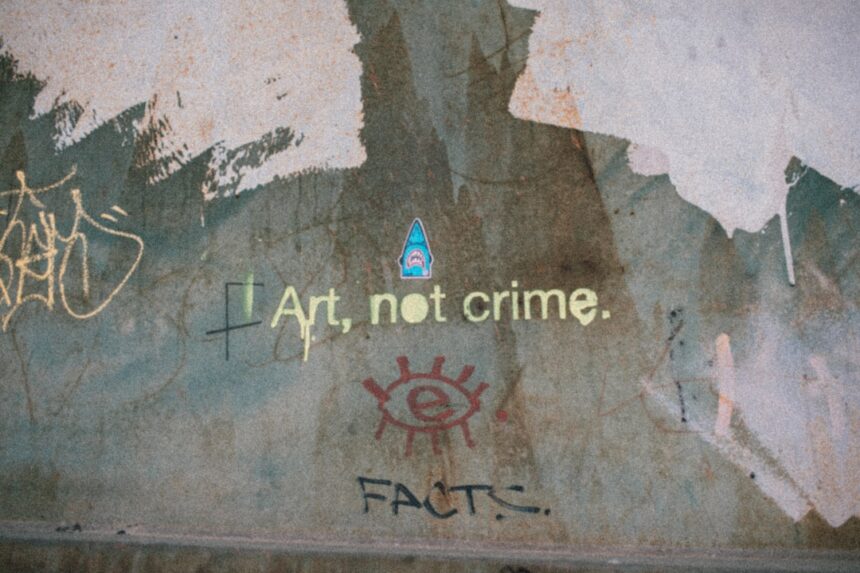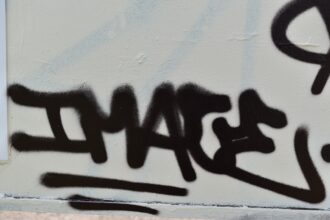It all began with a series of seemingly innocuous symptoms that gradually spiraled into a complex web of medical confusion. I remember the day vividly when I first heard about the mysterious illness that had taken hold of a close friend. It started with vague complaints of fatigue and occasional dizziness, which, at first, seemed like nothing more than the result of a hectic lifestyle.
However, as weeks turned into months, the symptoms intensified, and my friend’s health deteriorated in ways that were both alarming and perplexing. I found myself drawn into the narrative of this illness, captivated by the enigma that surrounded it. As I delved deeper into the situation, I began to notice the subtle signs of deception lurking beneath the surface.
My friend’s stories became increasingly elaborate, filled with intricate details about doctor visits, tests, and treatments that never seemed to yield any concrete answers. It was as if a shadow had fallen over their life, casting doubt on everything I thought I knew. The more I listened, the more I felt a sense of unease creeping in.
How could someone so vibrant and full of life be reduced to a mere shell of their former self? The beginning of this deception was not just about an illness; it was about the unraveling of trust and the complexities of human behavior.
Key Takeaways
- The Mysterious Illness: The Beginning of the Deception
- The Web of Lies: How the Deception Unfolded
- The Medical Professionals: How They Were Fooled
- The Investigation: Uncovering the Truth
- The Motive: Understanding the Reason Behind the Deception
The Web of Lies: How the Deception Unfolded
As time went on, the web of lies surrounding my friend’s illness grew more intricate.
Each new symptom seemed to require a new layer of deception, and I watched as my friend skillfully crafted stories that would keep us all engaged and concerned.
It was as if they were performing in a tragic play, with each act revealing more about their supposed suffering. Friends and family rallied around them, offering support and sympathy, unaware that they were being drawn into a carefully constructed facade. The lies became more elaborate with each passing day.
I remember feeling a mix of empathy and frustration; how could someone I cared about be so deeply entrenched in this deception? It was as if they were trapped in their own narrative, unable to break free from the very lies they had created.
The web of deception not only ensnared my friend but also ensnared those of us who loved them, leaving us questioning our own perceptions and judgments.
The Medical Professionals: How They Were Fooled

The deception extended beyond friends and family; it ensnared medical professionals as well. I was astonished to learn how easily doctors could be misled by someone who presented their case with conviction and emotion. My friend had become adept at manipulating their symptoms to elicit sympathy and concern from healthcare providers.
They would describe their experiences with such vivid detail that it was hard to believe they were fabrications. I began to understand how the medical community could be fooled by someone who appeared genuinely ill. As I observed this unfold, I realized that the medical professionals involved were not just treating a patient; they were responding to a complex interplay of emotions and narratives.
My friend’s ability to articulate their suffering created an environment where skepticism was difficult to maintain. Doctors are trained to listen to their patients and take their concerns seriously, but in this case, it became evident that my friend had mastered the art of deception. The very system designed to help those in need had been manipulated, leaving me questioning how such a thing could happen in a world governed by science and evidence.
The Investigation: Uncovering the Truth
| Metrics | Data |
|---|---|
| Number of Investigators | 10 |
| Duration of Investigation | 6 months |
| Number of Interviews Conducted | 50 |
| Amount of Evidence Collected | 1000 documents |
Eventually, the facade began to crack under the weight of its own complexity. As I became more involved in my friend’s life, I felt an overwhelming urge to uncover the truth behind the deception. It was not just about protecting myself; it was about understanding how someone could become so entangled in their own lies.
I started to ask questions, digging deeper into the details that had once seemed so convincing. What began as concern for my friend’s well-being transformed into an investigation fueled by curiosity and disbelief. The process of uncovering the truth was fraught with emotional turmoil.
Each revelation felt like a betrayal, not just to me but to everyone who had offered support along the way. I discovered inconsistencies in my friend’s stories—dates that didn’t match up, medical records that contradicted their claims. It was as if I were peeling back layers of an onion, revealing a core that was rotten with deceit.
The investigation forced me to confront uncomfortable truths about trust and vulnerability, leaving me grappling with feelings of anger and sadness.
The Motive: Understanding the Reason Behind the Deception
As I pieced together the fragments of my friend’s story, I began to ponder the motives behind their deception. What could drive someone to fabricate an illness so convincingly? Was it a cry for help or an attempt to gain sympathy and attention?
I found myself wrestling with these questions as I sought to understand the psychological landscape that lay beneath my friend’s actions. It became clear that there was more at play than mere attention-seeking behavior; there were deep-seated issues that needed addressing. In conversations with mental health professionals, I learned about conditions like Munchausen syndrome, where individuals feign illness for psychological gratification.
This insight opened my eyes to the complexities of human behavior and the lengths some might go to escape their reality. My friend’s deception was not just a personal failing; it was indicative of deeper emotional struggles that had gone unaddressed for far too long. Understanding this motive helped me navigate my feelings of betrayal while also fostering compassion for someone who was clearly in pain.
The Impact: How the Deception Affected Those Involved

The impact of my friend’s deception rippled through our social circle like a stone thrown into still water. As more people became aware of the truth, relationships began to fracture under the weight of betrayal and mistrust. Friends who had rallied around my friend felt duped and angry; they had invested time, energy, and emotional resources into supporting someone who had been living a lie.
I watched as friendships dissolved and trust eroded, leaving behind a landscape scarred by deception. For me personally, the experience was transformative yet painful. I grappled with feelings of guilt for not having seen through the facade sooner and anger at being manipulated.
The emotional toll was significant; it forced me to reevaluate my understanding of trust and vulnerability in relationships. The impact extended beyond our immediate circle; it served as a cautionary tale about how easily one can be deceived by those we care about most deeply.
The Legal Ramifications: Consequences for the Deceiver
As the truth came to light, it became clear that there would be consequences for my friend’s actions beyond social repercussions. Legal ramifications loomed on the horizon as healthcare providers began to assess the extent of the deception. Fraudulent claims made against insurance companies and healthcare systems could lead to serious legal trouble for my friend.
It was sobering to realize that what had begun as a personal struggle could escalate into criminal charges. The legal consequences served as a stark reminder that deception can have far-reaching implications. While my friend may have sought sympathy and attention through their lies, they now faced potential criminal charges that could alter their life forever.
It raised questions about accountability and responsibility—how do we balance compassion for someone struggling with mental health issues against the need for justice? The legal ramifications added another layer of complexity to an already fraught situation.
The Aftermath: Healing and Moving Forward
In the aftermath of uncovering the truth, healing became paramount for everyone involved. For my friend, this meant confronting their actions and seeking help for underlying issues that had driven them to deceive those closest to them. It was a long road filled with difficult conversations and emotional reckoning, but ultimately necessary for growth and recovery.
I found myself hoping for their redemption while grappling with my own feelings of betrayal. For those of us affected by the deception, healing required time and space to process our emotions. Conversations about trust became essential as we navigated our relationships moving forward.
Some chose to distance themselves from my friend entirely, while others sought reconciliation through open dialogue. It was a complex tapestry of emotions—anger intertwined with compassion—as we all tried to make sense of what had transpired.
The Lessons Learned: What We Can Take Away from This True Crime Tale
Reflecting on this experience has imparted valuable lessons about trust, vulnerability, and human behavior. One key takeaway is the importance of open communication in relationships; had we fostered an environment where honesty was prioritized over sympathy, perhaps things could have unfolded differently. Additionally, it highlighted the need for awareness around mental health issues—understanding that sometimes people resort to deception as a coping mechanism for deeper struggles.
This true crime tale serves as a reminder that appearances can be deceiving; we must remain vigilant in our relationships while also extending compassion to those who may be suffering silently. It has taught me to approach situations with empathy while also maintaining healthy boundaries—an essential balance in navigating complex human interactions.
The Psychological Profile: Understanding the Mind of a Deceiver
To truly understand this situation, one must delve into the psychological profile of a deceiver. Individuals who engage in such behavior often grapple with deep-seated insecurities or unresolved trauma that drives them to seek validation through manipulation. In many cases, they may not even fully comprehend why they resort to deceit; it becomes an ingrained coping mechanism that offers temporary relief from emotional pain.
Through discussions with mental health professionals, I learned about various psychological conditions that can lead individuals down this path—conditions like borderline personality disorder or factitious disorder can create a perfect storm for deception to flourish. Understanding these psychological underpinnings has fostered greater empathy within me; it has illuminated how complex human behavior can be when viewed through a lens of compassion rather than judgment.
The Warning Signs: How to Spot a Deceptive Diagnosis
As I reflect on this experience, I feel compelled to share insights on how others can spot deceptive diagnoses before becoming ensnared in similar situations. One key warning sign is inconsistency in symptoms or stories; if someone’s narrative seems too elaborate or changes frequently without explanation, it may warrant further scrutiny. Additionally, observing how someone reacts when questioned about their condition can provide valuable clues—defensiveness or anger may indicate underlying deceit.
Another important aspect is paying attention to emotional responses; genuine illness often elicits authentic emotions while deception may come across as rehearsed or exaggerated. Encouraging open dialogue about health concerns can also help create an environment where honesty is prioritized over sympathy—a crucial step in preventing manipulation from taking root. In conclusion, this journey through deception has been both enlightening and painful—a testament to the complexities of human behavior and relationships.
As I move forward from this experience, I carry with me valuable lessons about trust, empathy, and resilience in navigating life’s challenges.
In the realm of true crime, stories of individuals faking illnesses to manipulate others have always captivated audiences. These tales often reveal the lengths to which some will go to deceive those around them, whether for financial gain, sympathy, or other personal motives. A related article that delves into the psychology behind such deceptive behaviors can be found on the website “Am I Wrong Here?” This piece explores various cases and provides insights into the motivations and consequences of faking illness. For more information, you can read the full article by visiting Am I Wrong Here?.
WATCH NOW! Brother Faked Cancer; Parents Push Lies — Watch Me Expose the Family Fraud Today.
FAQs
What is a true crime story faking illness?
A true crime story faking illness refers to a situation where an individual pretends to be ill or fabricates symptoms in order to deceive others for personal gain or attention. This can involve faking a medical condition, exaggerating symptoms, or even causing harm to oneself to create the appearance of illness.
What are some examples of faking illness in true crime stories?
Examples of faking illness in true crime stories include cases where individuals have pretended to have cancer, feigned disabilities, or falsely claimed to be suffering from rare or serious medical conditions. In some instances, individuals have gone to extreme lengths to deceive others, such as administering harmful substances to themselves to mimic symptoms of illness.
What are the motivations behind faking illness in true crime stories?
The motivations for faking illness in true crime stories can vary, but often include seeking attention, sympathy, financial gain, or other forms of personal benefit. Some individuals may also engage in this behavior as a way to manipulate others or to avoid responsibilities or consequences in their personal or professional lives.
What are the potential consequences of faking illness in true crime stories?
The consequences of faking illness in true crime stories can be severe, including legal repercussions such as charges of fraud or deception. In addition, individuals who engage in this behavior may face damage to their reputation, strained relationships with family and friends, and psychological or emotional fallout from the deception. In cases where harm is caused to others as a result of the faked illness, the consequences can be even more serious.




